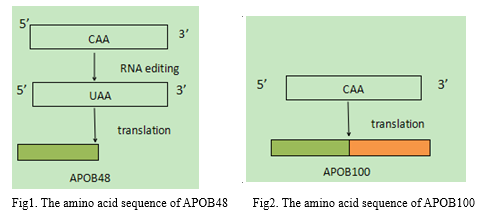The detection of the APOB family and its receptors
Human Apolipoprotein B (APOB ) was coded by APOB gene, and APOB is the primary apolipoprotein of very low-density lipoproteins(VLDL) and intermediate density lipoprotein(IDL). The levels of APOB are related to lipid metabolism, atherosclerosis and other cerebrovascular diseases. For this reason, it is the hot spot in Clinical research. While it is unclear what functional role APOB plays in low-density lipoproteins(LDL).The protein occurs in the plasma in 2 main isoforms, ApoB48 and ApoB100. The first is synthesized exclusively by the small intestine, the second by the liver. ApoB100 is the largest of the ApoB group of proteins, consisting of 4563 amino acids. In fact, ApoB48 is so called because it constitutes 48% of the sequence for ApoB100. ApoB48 is generated when a stop codon (UAA) at residue 2153 is created by RNA editing. As a result of the RNA editing, ApoB48 and ApoB100 share a common N-terminal sequence, but ApoB48 lacks ApoB100's C-terminal LDL receptor binding region. Hence, this is the most difference between ApoB48 and ApoB100.

The common detection method for APOB is ELISA and NMR (Nuclear Magnetic Resonance, NMR). NMR can analysis the structure of different subtypes of APOB , but NMR is mainly used for qualitative analysis. Based on the Protein expression platforms and Antibody purification platform , especially the ELISA kit development platform, Cloud-Clone. Corp. developed a series of products for APOB family and its receptors(APOB,APOB100,APOB48, and APOBR, including Proteins, Antibodies, ELISA kits and CLIA kits and so on.
Researchers can use ELISA and other methods for quantitative detection of APOB , also they can detect the level of APOB in different tissues via antibodies with different markers .
More related products please check http://www.cloud-clone.us/.
